Posted by Anita on 01.18.08 7:09 AM
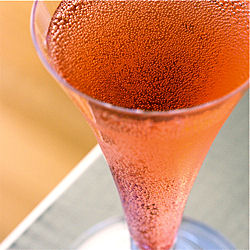 In the pantheon of sparkling cocktails, there are a thousand lesser gods, and then there are the titans: the bright Mimosa, the elegant Champagne cocktail, the tart French 75, and the dusky Kir Royale. They’re generally a subtle lot, and so simple to make that you hardly need a recipe. They’re all lovely in their own ways and moods — Mimosas at brunch, Champagne cocktails at weddings, French 75s when you want to get into an argument about gin vs. brandy — but the Kir Royale is perhaps the most adaptable.
In the pantheon of sparkling cocktails, there are a thousand lesser gods, and then there are the titans: the bright Mimosa, the elegant Champagne cocktail, the tart French 75, and the dusky Kir Royale. They’re generally a subtle lot, and so simple to make that you hardly need a recipe. They’re all lovely in their own ways and moods — Mimosas at brunch, Champagne cocktails at weddings, French 75s when you want to get into an argument about gin vs. brandy — but the Kir Royale is perhaps the most adaptable.
Until it was popularized by Catholic priest Félix Kir, the simple aperitif of white wine and blackcurrant liqueur was known quite aptly as blanc-cassis throughout its native Burgundy. But then, history intervened. An active organizer in the Resistance during World War II, Monsieur Kir helped plan the escape of more than 5,000 prisoners of war. After the Liberation, Kir was elected mayor of Dijon — the Burgundian capital — and eventually took his place in the French national assembly. He was the last clergy member to wear the habit in the halls of the Palais Bourbon, and he always toasted delegations visiting Dijon with the aperitif that perfectly marries two of the town’s best tipples.
The original Kir is made by dosing white wine — not, as some would say, Burgundy’s reknowned Chablis, but rather the slightly sour Aligoté — with Dijon’s equally famous blackcurrant liqueur, creme de cassis. The Kir Royale makes things a bit more festive by replacing the white wine with Champagne, an inspired substitution that moves an everyday apero into the realm of celebratory cocktail.
The Kir Royale also makes a perfect party drink, as it’s low in alcohol — best for guests who may not be accustomed to knocking back a few high-octane libations in an evening — and quite forgiving of measurement-free mixing. After all, what host wants to spend time fiddling with precisely a half-ounce of this and exactly three shakes of that when there are guests to greet, coats to hang, conversation to encourage, and appetizers to primp?
We’re having a few friends over for cocktails and canapés tomorrow night, and one of the ways we’re planning to keep things simple is by setting up a do-it-yourself Champagne bar. We’ll put a case of bubbly on ice, line up a couple dozen flutes, and gather a gaggle of colorful liqueurs — cassis, St-Germain, absinthe, violette, Chartreuse — for guests to customize their drinks. We’ll have syrups, garnishes, and bitters, too, plus a sheet with ideas on how to mix and match. It’ll be fun to see an assortment of pastel sparklers in the hands of our pals; I can’t wait to see what our clever friends concoct.
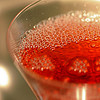
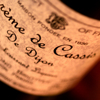
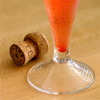
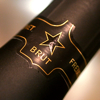
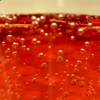

Kir Royale
1/4 to 1/2 ounce crème de cassis (or to taste)
Champagne or other dry sparkling wine
Pour the cassis into the flute, and top with the bubbly.
Garnish with a lemon twist, if desired.
Drink of the Week, drinks, entertaining, recipes, wine & bubbly
20 Comments »




Posted by Anita on 01.11.08 7:48 AM
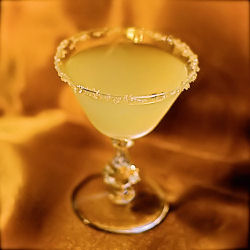 Invented in France during the years of America’s “noble experiment” with Prohibition, it’s puzzling that the Sidecar has yet to take its proper place in the modern cocktail renaissance. It’s a glorious drink when well made, but it does subject the bartender to a little bit of fuss.
Invented in France during the years of America’s “noble experiment” with Prohibition, it’s puzzling that the Sidecar has yet to take its proper place in the modern cocktail renaissance. It’s a glorious drink when well made, but it does subject the bartender to a little bit of fuss.
As with many simple drinks, the quality of the ingredients can make or break this recipe; Robert Hess does an excellent job detailing the contributions of the various components. But even when using top-shelf brands, you’ll need to do a fair bit of balancing. Brandies vary widely in strength and sweetness, and even plain-old Eureka lemons change in acidity throughout the growing season.
The traditional recipe of equal parts brandy, triple-sec, and lemon juice is very sweet, especially when served in the customary sugar-rimmed glass. Although I won’t go as far as David Embury — who rationalized that a Sidecar is simply a Daiquiri clone, and advocated a bone-dry ratio of 7:2:1 — I do think that all but the sweetest palates will prefer something closer to two parts brandy to one part each Cointreau and juice.
Like many old-time recipes, the Sidecar has undergone a dizzying list of modifications over the past 70 years. Beyond modernizing the proportions, this recipe stands up to a fair bit of tinkering. Varying the base liquor gets you a Chelsea Sidecar (gin), a Boston Sidecar (rum plus brandy), or an Applecar (Applejack). Swapping lime juice for the lemon, or tweaking Cointreau for another liqueur yields even more alternatives.

For this month’s Mixology Monday — a Brandy theme, hosted by the lovely Marleigh at over at Sloshed! — we took our inspiration from a drink we enjoyed at Cindy’s Backstreet Kitchen. The menu listed Belle de Brillet pear Cognac in place of the brandy (and you know we loves us some of that). Alas, the resulting mixture was jaw-numbingly sweet, but the concept was just too good to ignore; off we went to the home laboratory.
First we tried decreasing the sweet components: Reducing the Belle de Brillet diminished the beautiful pear essence of the drink, and halving the Cointreau flattened everything out. Starting out from the other direction, increasing the lemon juice made things too puckery. Dispensing with the sugared rim did help a bit, but it seems a shame to lose this sparkle.
At last, we turned to the Clear Creek Pear Brandy (or, better still, its sibling eau de vie in the captive-pear bottle). Hooray! We’d found plenty of pear and fruity warmth without the cloying sweetness.
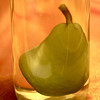
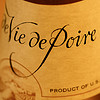
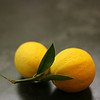
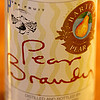
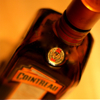

Le Side-car aux Poires
1-1/2 oz pear brandy
3/4 oz Cointreau
3/4 oz lemon juice
Before squeezing the lemon, rub the cut side along just the outside edge of a chilled cocktail glass. (Resist the urge to dip the rim in water or juice — as you see sloppy bartenders do just about everywhere — or you’ll end up with sugar inside the glass and floating in your drink.) Dip the edge into a plate of sugar, rolling to create a sugar rim.
Shake the brandy, Cointreau, and juice with ice. Strain into the prepared cocktail glass.
Drink of the Week, drinks, Mixology Monday, recipes
11 Comments »




Posted by Cameron on 01.04.08 7:03 AM
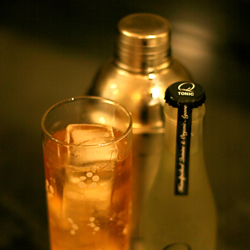 It sometimes seems like Dean & DeLuca‘s mission is to curate the world’s most eclectic collection of foodie curios. A trip through the aisles of the Napa Valley outpost can feel like a visit to Ripley’s Believe It Or Not! museum (“Oh look! Salt-cured hummingbird tongues packed in oil from Madagascar!”).
It sometimes seems like Dean & DeLuca‘s mission is to curate the world’s most eclectic collection of foodie curios. A trip through the aisles of the Napa Valley outpost can feel like a visit to Ripley’s Believe It Or Not! museum (“Oh look! Salt-cured hummingbird tongues packed in oil from Madagascar!”).
Of course, one of the great pleasures of cruising through such an outlandish assortment is that you occasionally run across something fabulous that’s incredibly difficult to find — like a bottle of Schweppes Indian Tonic Water. The regular Schweppes tonic is a staple in nearly every grocery store, but the drier Indian Tonic is all but unavailable in the States. Why the excitement? Until we sampled Fever Tree, I considered the rarely seen Schweppes Indian the sine qua non of tonic. Just as we grabbed a bottle from the cold case in order to see if was as good as we remembered, we spotted a 4-pack of Q Tonic, a newish brand that we’d heard of but not yet tried. Clearly the Fates had intervened, and another taste test was in order.
We set up the Schweppes Indian and the Q Tonic alongside a bottle of Fever Tree — the winner of our last tonic roundup — tasting each alone and mixed in a gin and tonic. Sweetened with glucose-fructose syrup and sugar, the Schweppes Indian tasted the most like the commercial American tonic waters, minus the nasty chemical aftertaste of high-fructose corn syrup. Its only drawback was a pronounced citrus finish that we found distracting. Next up, the Q Tonic had a light golden hue which may come from the agave syrup used as its sweetener. Bone dry, impossibly subtle, and with very little finish on the palate, the Q Tonic made for a somewhat flavorless G&T. If you’re tired of being bowled over by sugary, strongly-flavored tonic waters, you may enjoy the Q Tonic, but it left us unsatisfied.
Our favorite tonic remains the Fever Tree; we like the balance between bitter and sweet, the soft touch of cane sugar, and the occasional hints of spice.
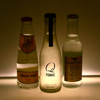
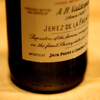

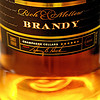
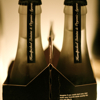
After revisiting the land of quinine, it seems only fitting to propose a tonic-based beverage for Drink of the Week. But since we’ve already covered the Gin & Tonic, and the Tequila & Tonic — and given that we refuse to consider Vodka-Tonic an actual drink — it seemed like we’d run out of options.
Luckily, CocktailDB rode to the rescue. The Granada seems like an oddball combination, but it’s surprisingly balanced and quite refreshing. Its relatively low alcohol content makes it a good option for cocktail parties, or perhaps a post-chores refresher on those Saturdays when a cold beer just seems too heavy or malty. It’s zippy and a little spicy, and the quinine’s bite cuts through the sweetness of the orange liqueur while playing off its bitter-orange notes to a T.
Granada
1 oz brandy
1 oz dry sherry
1/2 oz orange curaçao (such as Cointreau)
Shake together with ice, and strain into an ice-filled highball glass. Top with tonic, and serve.
Drink of the Week, drinks, recipes
6 Comments »




Posted by Anita on 12.28.07 7:03 AM
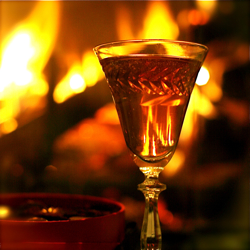 As 2007 slips away, our thoughts turn to cocktails we’d want to sip while curled up on the sofa with a good book or a fascinating companion. To my mind, the best drinks for the shortest nights mix spicy holiday flavors with a dash of new year’s sparkle.
As 2007 slips away, our thoughts turn to cocktails we’d want to sip while curled up on the sofa with a good book or a fascinating companion. To my mind, the best drinks for the shortest nights mix spicy holiday flavors with a dash of new year’s sparkle.
We wanted to pair these classic year-end tastes with seasonal citrus, given the incredible varieties gracing our farmers market. Initially, we tried blood-orange juice, elderflower liqueur, and Champagne, but we weren’t happy with the look — it screamed “Jello shot” rather than whispering “cocktail”. When we tried less garishly colored juices, our sparkler felt more like a complicated Mimosa than a cozy evening tipple.
Spying a small bottle of the Charbay Ruby Red grapefruit vodka in a pricey St. Helena liquor emporium, we decided to try a different route to the citrus belt. (Are you turning up your nose at flavored vodka? Don’t. These folks mean business: They use real fruit and old-world recipes. And they’re local. To us, anyway.) The vodka’s grapefruit-peel bitterness tempers the floral sweetness of the liqueur; the bubbly brightens the drink, while Fee’s whiskey-barrel bitters add a masculine depth.
Speaking of the Fee’s: If Santa didn’t leave you a bottle of these delectable drops in your stocking, you need to correct this error yourself. Yes, they’re worth the shocking premium over the cost of regular bitters, and you might have to break down and pay for shipping. If you have to go the mail-order route, you may as well buy a few bottles for friends. No, really… you can thank me later.
A finishing touch of orange bitters reinforces the drink’s citrus-spice scent, without adding any untoward sour or sweet notes. Of course, you can make this cocktail with any sparkling wine — a lovely trait during the time of year when half-finished bottles of bubbly seem to magically appear in fridges everywhere. But for that perfect flame-like glow, seek out a dryish rosé for your sparkler… and get ready to get cozy.
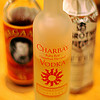
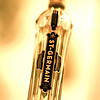


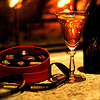
Firelight
1 oz St-Germain elderflower liqueur
1/2 oz grapefruit-infused vodka, homemade or Charbay Ruby Red
3 dashes Fee’s whiskey barrel bitters (or 2 dashes Angostura and 1 dash Peychaud’s)
—
2 oz rosé sparkling wine
1 to 2 dashes orange bitters (preferrably Regan’s)
In a mixing glass with ice, stir together the St-Germain, grapefruit vodka, and aromatic bitters. Strain into a chilled cocktail glass, and top with the bubbly and the orange bitters.
Drink of the Week, drinks, holidays & occasions, recipes
8 Comments »




Posted by Anita on 12.21.07 7:02 AM
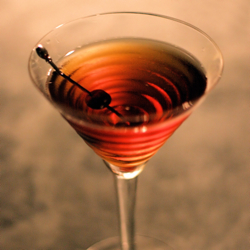 It seems like ages ago that we chose Benedictine as the theme for the second edition of Raiders of the Lost Cocktail over on The Spirit World. As November wound down, tasty-sounding cocktails popped up in the comments section, and we all held our breath waiting for the judges to pronounce a winner. The silence was deafening.
It seems like ages ago that we chose Benedictine as the theme for the second edition of Raiders of the Lost Cocktail over on The Spirit World. As November wound down, tasty-sounding cocktails popped up in the comments section, and we all held our breath waiting for the judges to pronounce a winner. The silence was deafening.
About a week ago, I got an email from Andrew, The Spirit World’s intrepid editor, asking me when I’d be able to send him my choice for RotLC winner.
Come again?
Never mind that the previous episodes’ rules had clearly stated “The winner will be chosen by consensus judgment of the TSW staff”. Andrew made it plain that the Powers That Be would not take no for an answer. I was duly deputized to act as their collective liver brain in matters Benedictine.
People, if you think that it was tough for me to choose a mixable yet somewhat obscure spirit, you have no idea how hard it was to pick the winning drink from a batch submitted by friends and colleagues!
But duty called. I printed out a list of recipes — leaving off the names of their contributors — and gathered a double armload of ingredients from the bar. Some promising drinks were doomed from the start, being previously unpublished recipes, or personal variations of classics. Remember, dear reader, the purpose of Raiders is resurrecting the cocktails of yore, finding them a new audience among the modern mixology mavens.
And then there were more than a few that fell outside the bounds of “relatively common ingredients” and “simpler construction”. (Does your neighborhood tavern stock creme de roses? Raspberry syrup? Whole eggs? Mmm, yeah… mine either.)
Even after winnowing the wheat from the chaff, we were left with a healthy roster of candidates. We shook, we stirred, we sipped, we shot. We tasted and tested, and resisted the temptation to tweak. When all was said and done, two drinks rose to the top of the pack, and we set those recipes aside for a second night of testing on fresh palates.
The first, Tango No. 2, was dead simple: Equal parts dry and sweet vermouth, Benedictine, white rum, and orange juice. No complicated garnish, no funky glassware, no special equipment. The combination of rum and OJ brought out the Benedictine’s citrus notes, and the two vermouths played well with its herbal components. A well-balanced drink and a serious contender.
But the drink that won our hearts — the one we both tried to sneak away with when judging was done — was the Cocktail a la Louisiane. The lovechild of the creole Sazerac and the yankee Manhattan, the Louisiane’s gorgeous glow warms a jaded soul. We worried a few moments about the “preference to common ingredients” clause, as La Louisiane is best with absinthe. But we rationalized that the bottle of pastis you’re likely to find in most big-city bars is sufficient to make this old New Orleans gem shine brightly.
So, ladies and gents, a round of applause for Paul Clarke of The Cocktail Chronicles, the promoter of this fair libation, and the lucky fellow who’ll pick next month’s signature ingredient.
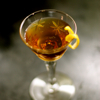
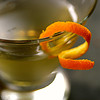


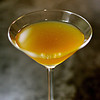
Cocktail a la Louisiane
— from Stanley Clisby Arthur’s Famous New Orleans Drinks and How to Mix ‘Em
3/4 ounce rye
3/4 ounce Benedictine
3/4 ounce sweet vermouth
3 dashes Peychaud’s bitters
3 dashes absinthe, Herbsaint, or pastis
Stir all ingredients in an ice-filled mixing glass. Strain into a well-chilled cocktail glass, garnish with a cherry.
Mixing note: It’s simple to measure three dashes of bitters — they come in a shaker-top bottle, after all. The absinthe’s a bit trickier, and even a slightly heavy hand will throw your drink off balance. To keep the anise in line, we shook the bitters into a bar spoon to get a rough idea of what “three dashes” looked like, then measured an equal amount of absinthe. If you find yourself smitten enough to adopt the Louisiane as your winter tipple, fill an empty bitters bottle with absinthe to keep the ritual simple.
Drink of the Week, drinks, other blogs, recipes
2 Comments »




Posted by Anita on 12.14.07 7:02 AM
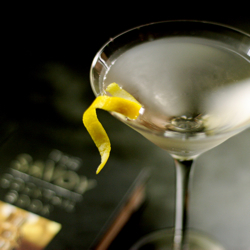 Before we get on to this week’s cocktail, we have two bits of housekeeping: (1) Enter to win a chance to bring Drink of the Week to your house by buying a virtual raffle ticket for our Menu for Hope custom mixology prize. (2) Please remember to vote today for your favorite finalists in the WellFed Food Blog Awards. If you’re a new visitor, here’s a handy link to just our drinks content.
Before we get on to this week’s cocktail, we have two bits of housekeeping: (1) Enter to win a chance to bring Drink of the Week to your house by buying a virtual raffle ticket for our Menu for Hope custom mixology prize. (2) Please remember to vote today for your favorite finalists in the WellFed Food Blog Awards. If you’re a new visitor, here’s a handy link to just our drinks content.
—
It’s hard to think of Prohibition as any sort of positive force, but indeed there are a few improvements in the world of drinks that we can lay solidly at the feet of the Noble Experiment.
In the early years of the 20th century, the few females found in city taverns tended to be …professionals, of one sort or another. With the emergence of speakeasies, it became fashionable for daring young women to join their male friends for a night on the town. By the time of repeal, the presence of the fairer sex in bars was accepted fact in all but the most masculine enclaves.
Another odd side-effect of the dry years was the export of our uniquely American cocktail tradition to other climes. Rather than ply their trade with bathtub gin and other questionable potations, many mixologists took to the seas, heading for saner lands.
One such man, Harry Craddock, left New York in 1920 to become head barman at London’s famed Savoy hotel. Almost single-handedly popularizing the pantheon of mixed drinks in a land where strong ale was the roughest stuff poured, Craddock was obviously a force to be reckoned with. A beacon for ocean-hopping Yanks and Londoners alike, the American Bar’s popularity under his leadership drove the 1930 publication of a drinks manual called, simply, The Savoy Cocktail Book.
Amazingly, the Savoy’s current head barman, Salim Khoury, is only the seventh to hold the title since the 1890s. (There must be something in the, er, water?) He trained as assistant to the legendary Peter Dorelli, and has himself been employed at the American Bar since 1969. Perhaps even more remarkable, The Savoy Cocktail Book remains in print — an updated printing of the latest edition debuted last month — and the American Bar maintains its place as a London cocktail mecca… at least for those with the means to spend £12 ($25) or more on a single drink.
But like all legends of a certain age, the American Bar is in need of a spot of nip-and-tuck. Tomorrow night, in fact, the entire Savoy will close for a 16-month, £100 million restoration. No mention is made in press clippings of plans for the American Bar, specifically, but one must imagine that the hotel’s current caretakers realize the pitfalls of tampering too greatly with such an international icon.
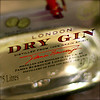


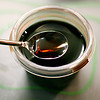
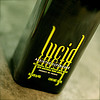
There are least four eponymous Savoy drinks to be found in Craddock’s book. Lacking the sloe gin needed to attempt the Savoy Tango, and the nerve required to build the Savoy Hotel, we were left with two versions of the Savoy Hotel Special Cocktail. Although variation #2 is distinctive, the original below is our preference.
Savoy Hotel Special Cocktail #1
2 oz dry gin
1 oz dry vermouth
2 dashes quality grenadine
1 dash absinthe
lemon peel
Shake* well and strain into a cocktail glass. Squeeze lemon peel on top.
—
* Traditional mixology calls for clear drinks to be stirred with ice, and cloudy drinks (those with dairy or juice, in the main) to be shaken — a guideline that appears to be disregarded not just here but in numerous recipes throughout The Savoy Cocktail Book.
The preface to the 1999 British edition (and possibly others) adds to the confusion. After quoting Peter Dorelli on the subject of the proper way to chill a drink — “…the ice should travel the length of the shaker, so that you awaken the drink. If you don’t do this, you are cheating…” — the unnamed prologuist informs us that “There are, in fact, three ways of shaking a cocktail: If opaque or cloudy, shake it; if clear, stir gently; if solid, blend it.”
Hm.
He seems to be using “shaking” as a synonym for “chilling and diluting”. But, then, why are there plenty of recipes that clearly call for a stir?
Obviously, some in-person investigation is required, perhaps a direct follow-up with Mr. Khoury himself. Who’s up for a London trip in, say, spring 2009?
Drink of the Week, drinks
12 Comments »




Posted by Anita on 12.10.07 12:02 AM
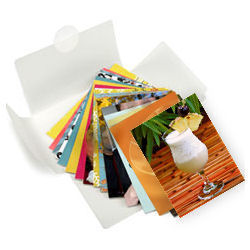 “Drink of the Week” Cocktail Notecards
“Drink of the Week” Cocktail Notecards
Be the envy of your cocktailian friends with this one-of-a-kind set of photo-postcards featuring images from Married… with Dinner’s popular “Drink of the Week” series.
These cards feature 20 different images selected from the best examples of more than a year’s worth of tempting photos, including a number of award-winning images. Use them for thank-you notes and party invitations, or hang them in your home bar for inspiration. This set of postcards is professionally printed by Moo — the same folks who make those miniature calling cards that all the bloggers love. They’re printed on heavyweight cardstock and laminated on the front, with a final size of approximately 4×6 inches.
Worldwide shipping is available for this prize.
This item is Menu for Hope prize UW-07.
– Click here to make a donation and enter to win.
– Read the Menu for Hope overview to learn more.
Drink of the Week, Menu for Hope
1 Comment »




Posted by Anita on 12.07.07 7:03 AM
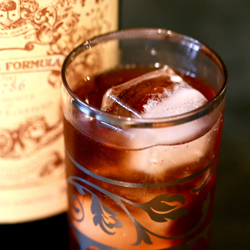 After going to all that trouble to find our favorite sweet vermouths, it seems only fitting for this week’s drink to highlight vermouth’s strengths. So many recipes that call for sweet vermouth use just a splash, or drown its subtleties under a lot of strong liquor. But the Americano — essentially a highball Negroni, minus the gin — takes advantage of both vermouth’s sweetness as a foil and its bitterness as a complement to the drink’s other main ingredient: Campari.
After going to all that trouble to find our favorite sweet vermouths, it seems only fitting for this week’s drink to highlight vermouth’s strengths. So many recipes that call for sweet vermouth use just a splash, or drown its subtleties under a lot of strong liquor. But the Americano — essentially a highball Negroni, minus the gin — takes advantage of both vermouth’s sweetness as a foil and its bitterness as a complement to the drink’s other main ingredient: Campari.
Not surprisingly, Campari’s distinctively bitter bite pairs best with a less-herbal sweet vermouth. (Monseiur Prat, your services will not be required this evening.) Most recipes call for a 1:1 ratio of Campari to sweet vermouth, but I like my Americanos — and my Negronis, for that matter — on the wetter side. Especially when using a specialty brand like Carpano Antica, this slight imbalance helps the vermouth emerge from Campari’s assertive shadow. This is definitely one of those times to use the Cinzano, if you have it. Its sweetness isn’t as problematic here, and actually helps balance the bitterness.
A tall, cool drink may seem an odd choice for December, but consider its merits: The color’s a festive red, and the flavor’s sassy enough to hold its own alongside rich holiday hors d’oeuvres. With seltzer’s sparkle and a relatively low alcohol content, the Americano makes a savvy choice in a season that’s often filled with back-to-back parties. There aren’t any tricky measurements to remember, and the Americano’s strength is infinitely adaptable to the drinker’s taste simply by adjusting the spirit-to-soda ratio. In short, it’s the platonic cocktail-party option, a seasonal spritzer extraordinaire.

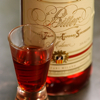
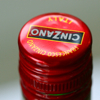
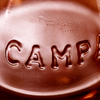
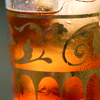
Americano
1 oz sweet vermouth
3/4 oz Campari
soda water
lemon twist (optional)
Add the vermouth and Campari to an ice-filled highball or rocks glass. Top with soda water and stir to combine. Garnish with a lemon twist, if desired.
Drink of the Week, drinks, recipes
4 Comments »




Posted by Anita on 11.30.07 7:02 AM
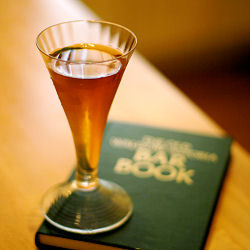 A few months ago, the New Yorker ran a ‘briefly noted’ blurb about Michael Lerner’s book Dry Manhattan: Prohibition in New York City. The review’s blasé tone must have dissuaded me from rushing out to buy a copy; instead, I patiently waited months for my chance to read our library’s single circulating print.
A few months ago, the New Yorker ran a ‘briefly noted’ blurb about Michael Lerner’s book Dry Manhattan: Prohibition in New York City. The review’s blasé tone must have dissuaded me from rushing out to buy a copy; instead, I patiently waited months for my chance to read our library’s single circulating print.
Had I known what a compelling read Dry Manhattan would be, I probably would have spent 20 bucks for the luxury of getting my hands on it sooner. True, it’s a bit scholarly, weighed down with inconvenient end-notes and a tendency toward expository repetition. But I can forgive the academic author’s shortcomings, given how entertaining the final story becomes, even when you know the ending.
Despite his geographic focus on New York City, Lerner illuminates the entire era by throwing a cosmopolitan light on the social changes that led both to Prohibition and its eventual Repeal. Although the book steers clear of drawing any overt parallels to current politics, readers who possess even a passing familiarity with modern-day prohibition movements — foie gras bans and the war on medical cannabis come to mind — will recognize plenty of eerie echoes from 80 years past. The story here makes a stark reminder of how a vocal, conservative, puritan minority swept away the freedoms of an entire country as their city-dwelling counterparts complacently boasted “it can never happen here”. Until it did… and it stayed that way for 13 long, dry years.
Honestly, it’s enough to send you straight to the bar in search of a sedative.
Perusing my library for appropriate Prohibition-era cocktails to salve my nerves, I stumbled upon a drink called the Ampersand in the Old Waldorf-Astoria Bar Book. How could I help but love a drink named after my favorite typographical glyph? (I suppose I just outed myself as a font geek. So be it.) Plus, it just sounds like a winner: Gin, brandy, sweet vermouth, plus a pair of orange-scented grace notes… What’s not to like?
But why “Ampersand”?
Although the compendium is rife with anecdotes — no great surprise, given that it was laid down by the hotel’s official historian — the origins of this particular drink’s name are lost to the mists of time. It’s possible that the typographical moniker’s a nod to Martini & Rossi, the still-popular Italian sweet vermouth, and one of the drink’s key ingredients.
Whatever the namer’s original intent, it seems particularly appropriate as cocktail bloggers around the world are celebrating both this month’s Mixology Monday & this year’s Repeal Day festivities next week. Wednesday evening, be sure to raise a glass of your favorite beverage in honor of those who fought the good fight in the 1930s, restoring the pursuit of mixological happiness to us all.
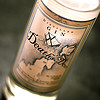



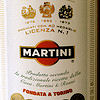
Ampersand
1 oz Old Tom gin (see note)
1 oz brandy
1 oz Italian sweet vermouth
2 dashes orange bitters
orange curaçao, to finish
In an ice-filled mixing glass, stir the gin, brandy, vermouth, and bitters until very cold. Strain into a chilled cocktail glass, then add two drops of curaçao.
Note: Old Tom was a sweetened gin of yore, a popular ingredient in many pre-Prohibition cocktail recipes. Although there are no ready sources for such a beast, fruit-derived gins such as G’vine are not bad stand-ins. Alternately, David Wondrich recommends slightly sweetened Plymouth or Junipero as acceptable substitutes; a drop or two of simple syrup seemed to do the trick in the Ampersand samples we tried. Given its lore, I suspect the original Old Tom gins were a fair deal harsher than anything on the shelves today, but we’re going for delicious approximations here, rather than slavish authenticity.
My neighbor Erik (proprietor of Underhill Lounge) was kind enough to let us sample from his personal stash of Death’s Door gin, a product that may be the closest modern Old Tom equivalent. Its flavor is noticeably sweet, a trait that the distillers assured Eric was intended rather than accidental. Alas, it’s not widely available outside the upper Midwest, but we didn’t find a drastic difference in mixed drinks made with Death’s Door compared with those made from sweetened dry gins.
bar culture, Drink of the Week, drinks, holidays & occasions, literary, Mixology Monday, other blogs, recipes
15 Comments »




Posted by Anita on 11.23.07 7:14 AM
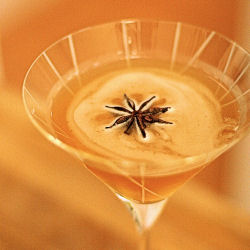 When DPaul asked me to tend bar at Sean‘s birthday cocktail party, I jumped at the chance. All the fun of planning and serving drinks to our friends, but none of the mess? Sign me up! In all honesty, it seemed a simple enough assignment. My only limitations: Neither Sean nor Paul is a fan of gin (something we’re planning on addressing next year), and Sean has a well-known horreur of orange.
When DPaul asked me to tend bar at Sean‘s birthday cocktail party, I jumped at the chance. All the fun of planning and serving drinks to our friends, but none of the mess? Sign me up! In all honesty, it seemed a simple enough assignment. My only limitations: Neither Sean nor Paul is a fan of gin (something we’re planning on addressing next year), and Sean has a well-known horreur of orange.
I wanted to keep things interesting without going overboard — no complicated lists of ingredients to be purchased, schlepped, and mixed. I also wanted drinks that were flavorful but not too strong. Drinking Martinis and Manhattans all night leaves a dreadful impression the next morning, especially for folks who aren’t used to anything stronger than a glass of red wine.
Paging back through a year’s worth of Drinks of the Week, I was astonished by how many were gin based. (Well over half, can you believe it?) Most of those that remained were either seasonally inappropriate, or not suited to serving in quantity. The lone successful candidate was a variation on our own Rosemary Five, tweaked ever so slightly by substituting lemon juice for the original lime. The birthday boy’s a big fan of pears, and the other ingredients are common enough that none of the guests would be spooked.
I wanted another effervescent drink for a second option, but none of the bubbly drinks in our repertoire seemed like a good fit for the occasion. Flipping through cocktail books, I noticed a few mentions of a tipple called the Oh, Henry! — a blend of ginger ale, Benedictine, and Bourbon (or whiskey, in some Continental sources). Mixed in equal proportions as some books suggested, the drink was far too sweet and overpowered by the Benedictine’s spice. But dropping the ratios to 2:2:1 worked perfectly when using a saucy Bourbon and a fiesty ginger ale. (We paired Knob Creek and Blenheim for the party, although Fever-Tree works fine if you prefer a subtler variation.)
If I do say so myself, both drinks were well received. The Oh, Henry!’s bourbon base made it a tougher sell, but I spied a number of folks being converted by a sip of their neighbor’s drink, and coming back for the darker cocktail on their second round. Could this be a gateway drink for the bourbon-averse?
Not surprisingly, this simple mix has become a favorite in our house, too. It’s a perfect autumn-into-winter blend of sugar and spice, with just enough herbal undertones to keep everything grounded. The star anise garnish — stolen from the Falling Leaves — is our own touch, a complementary (and attractive) addition to the drink’s aromatic profile.
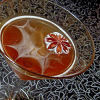
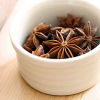
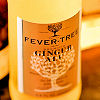
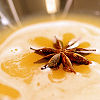
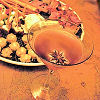
Oh, Henry!
1-1/2 oz bourbon
1-1/2 oz ginger ale
3/4 oz Benedictine
Stir all ingredients in an ice-filled mixing glass, and strain into a cocktail glass. Garnish with a piece of star anise, if desired.
Drink of the Week, drinks, holidays & occasions, other blogs, recipes
10 Comments »




 In the pantheon of sparkling cocktails, there are a thousand lesser gods, and then there are the titans: the bright Mimosa, the elegant Champagne cocktail, the tart French 75, and the dusky Kir Royale. They’re generally a subtle lot, and so simple to make that you hardly need a recipe. They’re all lovely in their own ways and moods — Mimosas at brunch, Champagne cocktails at weddings, French 75s when you want to get into an argument about gin vs. brandy — but the Kir Royale is perhaps the most adaptable.
In the pantheon of sparkling cocktails, there are a thousand lesser gods, and then there are the titans: the bright Mimosa, the elegant Champagne cocktail, the tart French 75, and the dusky Kir Royale. They’re generally a subtle lot, and so simple to make that you hardly need a recipe. They’re all lovely in their own ways and moods — Mimosas at brunch, Champagne cocktails at weddings, French 75s when you want to get into an argument about gin vs. brandy — but the Kir Royale is perhaps the most adaptable.








































 “Drink of the Week” Cocktail Notecards
“Drink of the Week” Cocktail Notecards
















